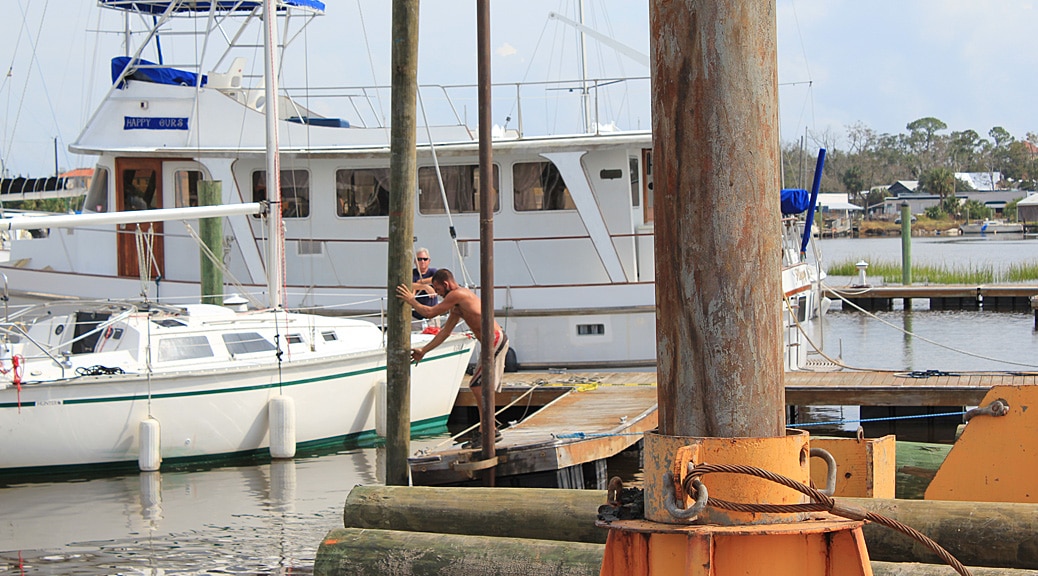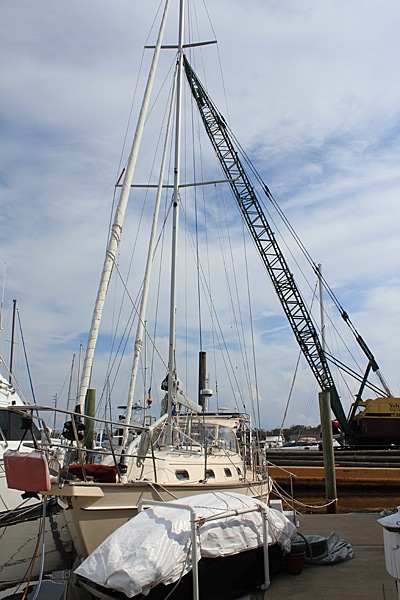Although our marina was spared the serious devastation that Hurricane Irma wreaked in other locales in Florida, and even treated us lightly in comparison to several other marinas in St. Augustine, there was still damage to our docks. It was instructive to see just what vulnerabilities the wind and surge exploited, and what held fast. “D” dock, just next to ours, required heavy equipment for repair in addition to the boat rescue and skilled marina repairs provided by our marina staff. All of this was interesting to watch and to sometimes participate in as amateur assistants.
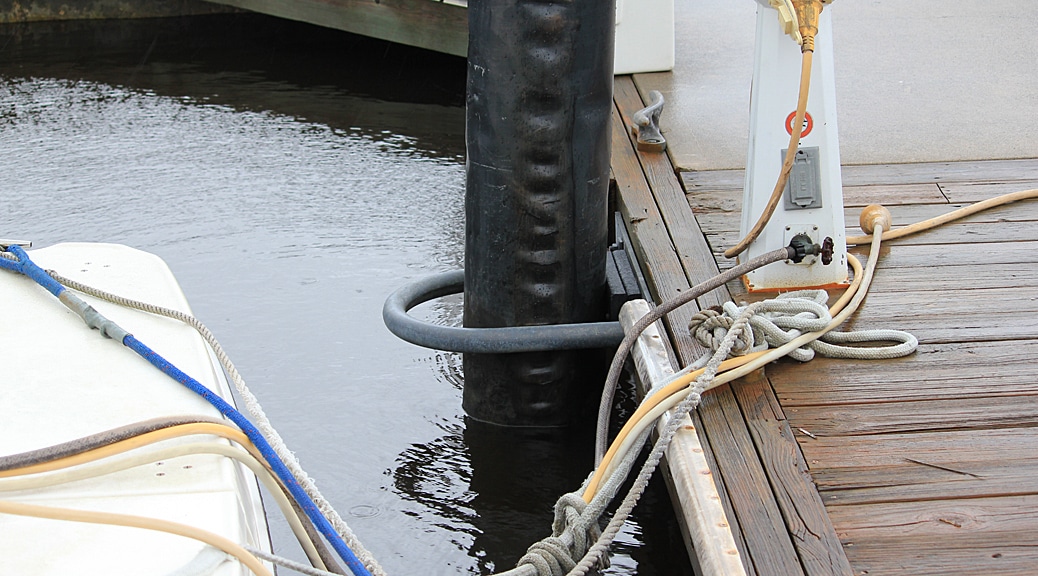
We have floating docks, which means the dock itself, made of rectangles of floating wood and concrete, is affixed to pilings (large telephone-type poles) that extend 18 feet out of the water at mean high tide. The docks ride the tide up and down by means of large metal rings attached to the dock and fitted over the pilings. The advantages of floating docks over fixed docks (in which the docks are affixed by wood to the pilings and the whole pier is a static structure that does not change with the tide) are several. The relationship between the boat and the dock doesn’t change with a floating dock-the boat is cleated by its lines to the dock and the combination rides up and down on the pilings. This obviates the need for line adjustment during a normal, or even an extreme, tide cycle. The fact that the dock can ride up and down for 18 feet via the ring system means the docks are not subject to being submerged during a storm surge. Of course, if the surge is greater than 18 feet, the rings and therefore the whole dock can “float” off the top of the pilings, with the disastrous result of boats lashed to a freely floating dock that then is blown with the wind and caught by the current. This happened to some marinas here in St. Augustine during Hurricane Matthew, and surely happened with Irma in the hardest hit areas of southern Fla.
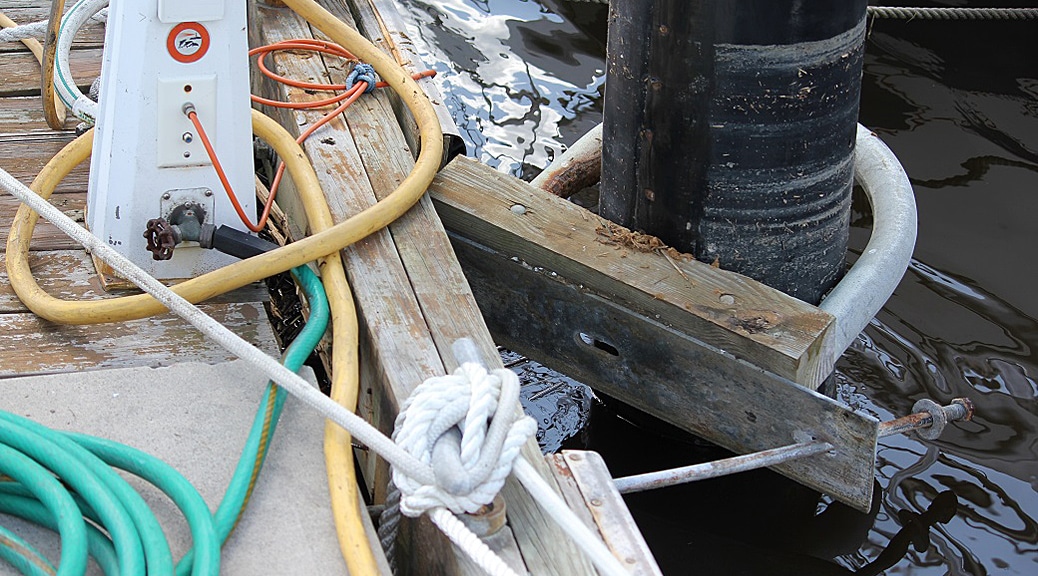
Here at our marina, several pilings snapped off due to the force of the wind, and multiple rings were severed from their attachments. The T-head of “D” dock was nearly severed from the rest of the dock and was pushed from its normal 90-degree angle to a much more acute angle to the remaining dock, with multiple boats caught, squeezed, and damaged in the process (See Irma post). Several finger piers (small sections of dock parallel to the main dock that one walks on to board the boat) were also bent askew as the boats were squashed together. Some of the dock rings caught at high tide on the remaining damaged pilings, thus keeping those sections of the dock hoisted crazily in air, reminiscent of an Escher print.
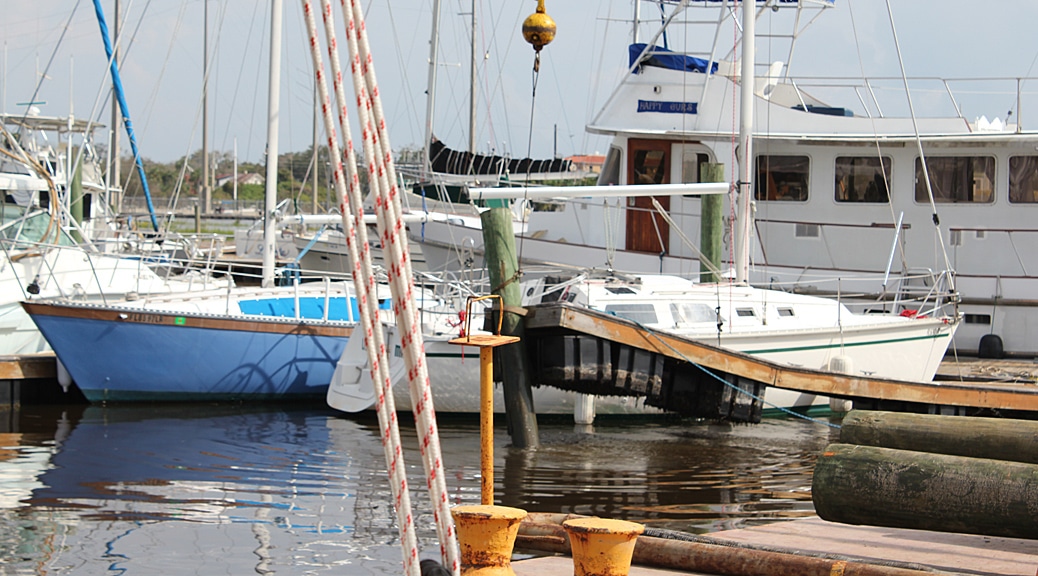
A 55’ Cheoy Lee trawler was undamaged, but was attached to the unstable T-head. As the live-aboard owners were still evacuated, they gave permission for their boat to be moved-without the ability to use engine power-to a safer slip. Our marina manager recruited about 10 of us and along with his staff, moved this approximately 35-ton boat without engine assist to a slip on another dock. Waiting till wind and tide were assisting, a line was affixed to bow and stern, and two outboard dinghies acted as tugs. Under direction, we floated the boat gently from one dock to another. Tommy got to be “brakeman” charged with pulling the boat back, along with two other folks, in case it all went to hell and the boat started to go awry. I got to be on the bow and throw a line to the folks waiting at the new slip, and therefore got a great view of everyone shouting and pointing to where they thought the two “tugs” should apply pull. The trawler coasted into her new slip as sweet as a dream, and we were able to text pictures of the “rescued” boat to our relieved friends.
Other boats whose engines were accessible were moved by their owners or hired captains. Once each at-risk boat was relocated, the repair barge arrived.
The repair barge crew consisted of a pilot for the barge, a heavy equipment operator for the crane, and a handful of shirtless, sun browned, work-booted, nimble, future Marlboro men.
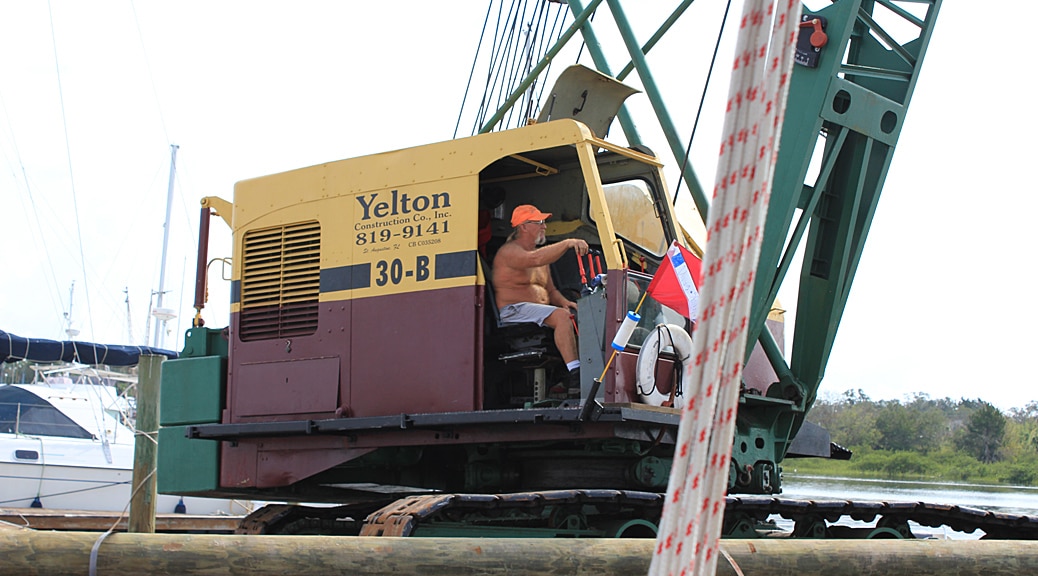
In short order, they had shoe-horned the barge in the narrow space between our dock and “D” and anchored it by dropping a fore and aft piling through dedicated holes in the barge deck to hold the platform secure.
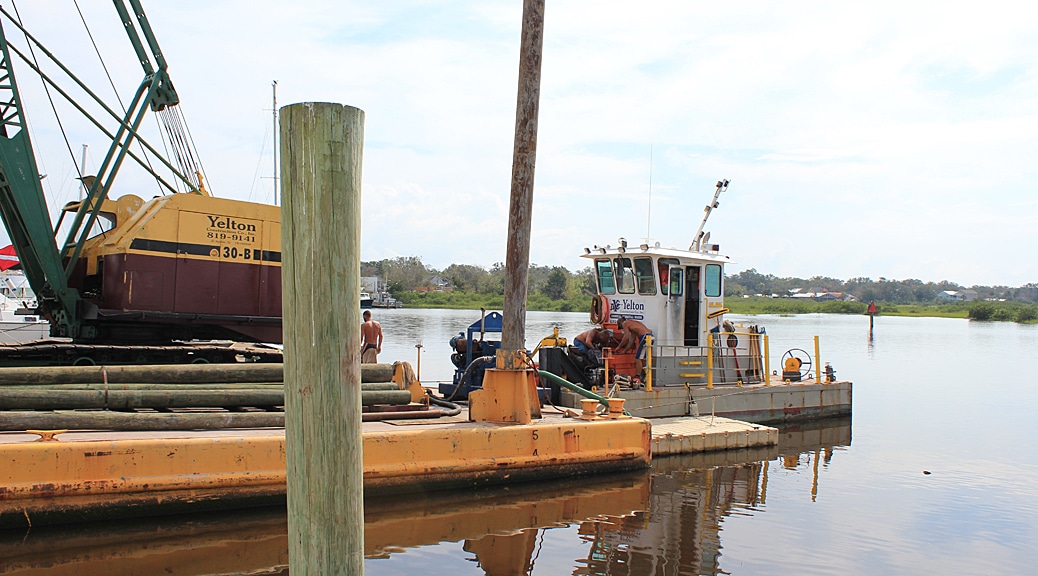
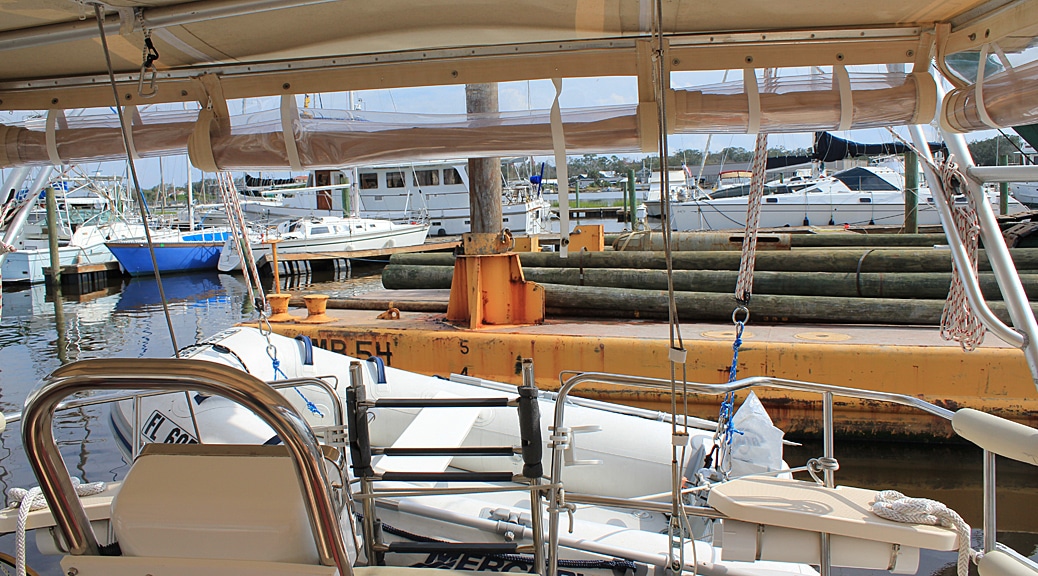
In less than half a day they had removed old pilings by applying a friction strap and yanking them out by crane and depositing them on the barge.
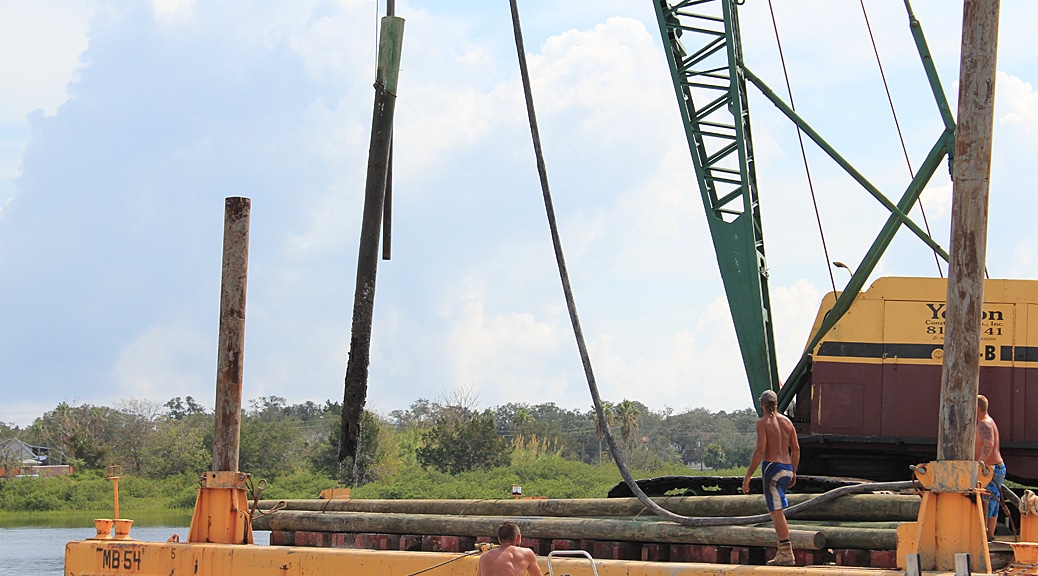
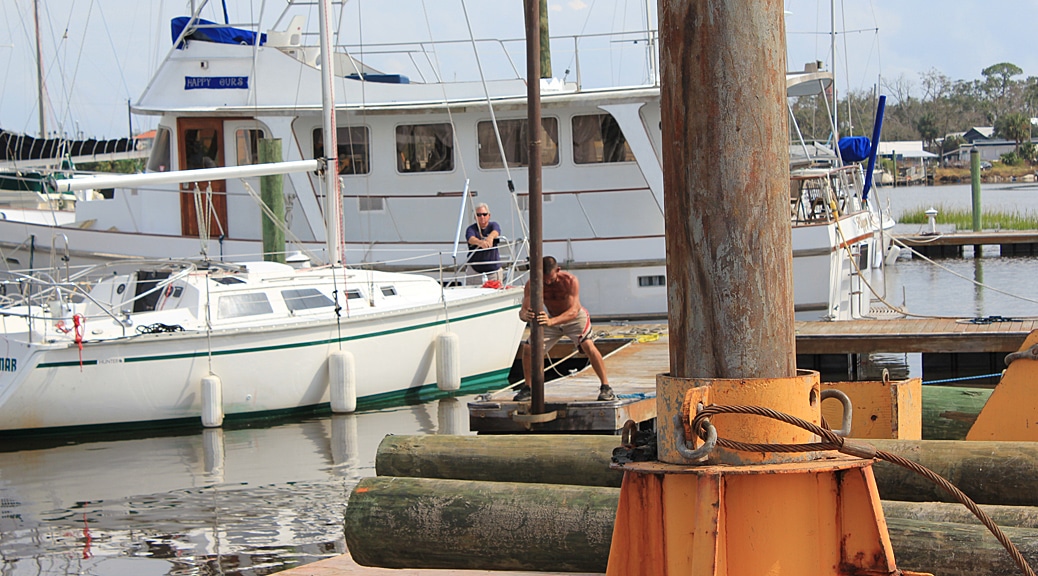
Then a pressure hose was used to create a hole in the river bottom and new pilings placed and pounded in. Lastly, rings were re-applied-this last sometimes requiring a crew-member to get in the water and torque in the bolts with a cordless impact wrench. They took a quick lunchtime break, during which one crew member’s wife brought both a packed lunch and their infant. The latter was proudly paraded by Daddy all over the barge for his coworkers to admire and tickle.
